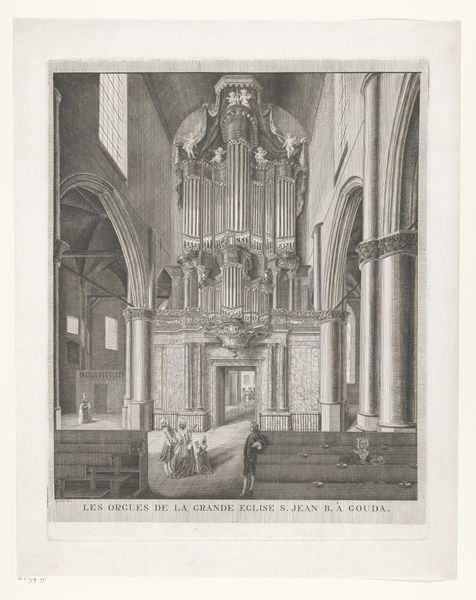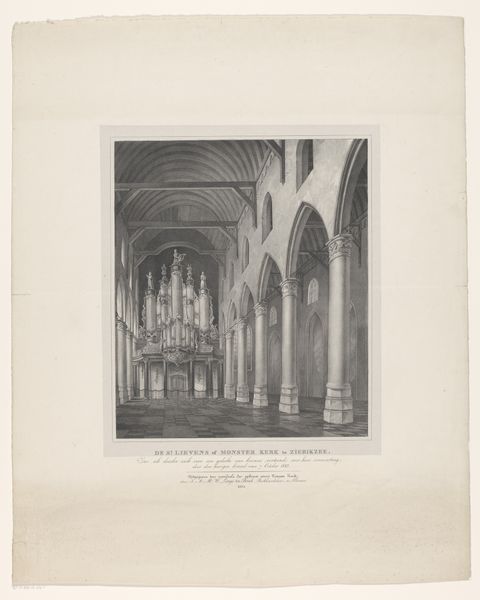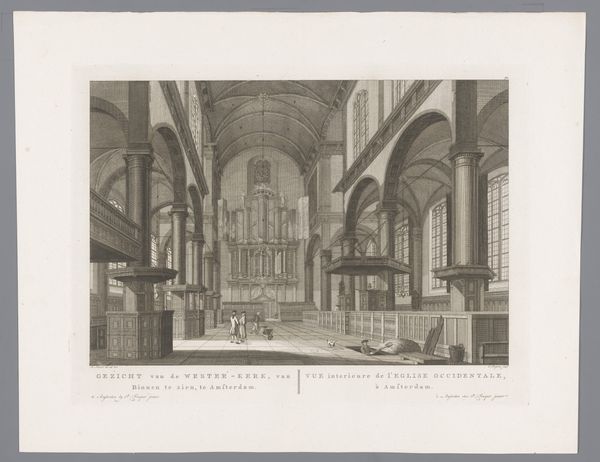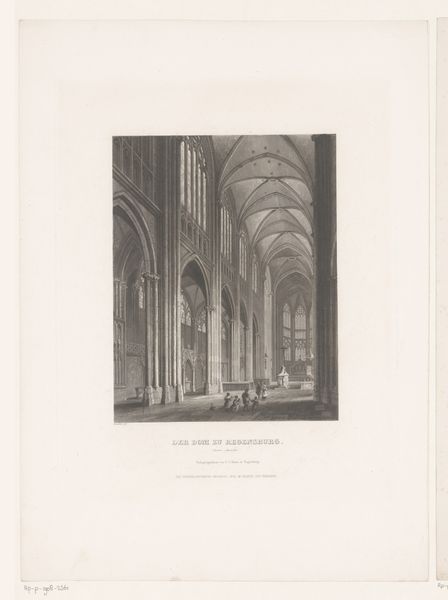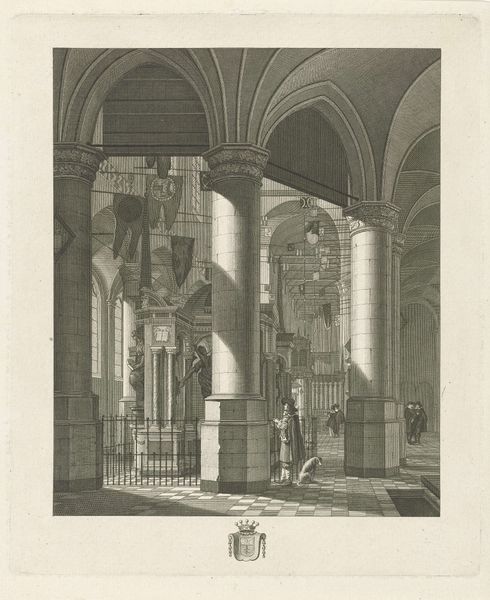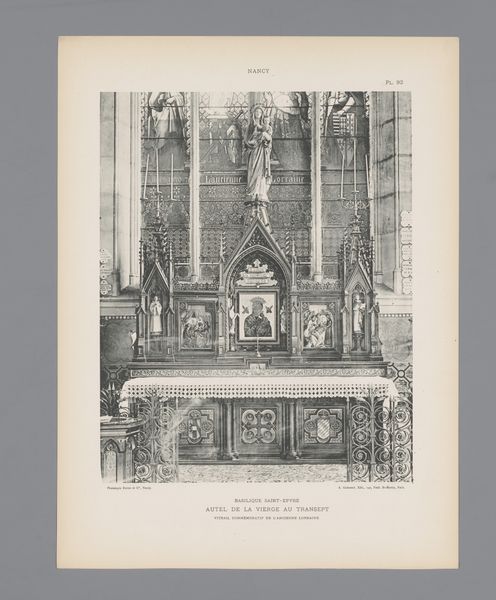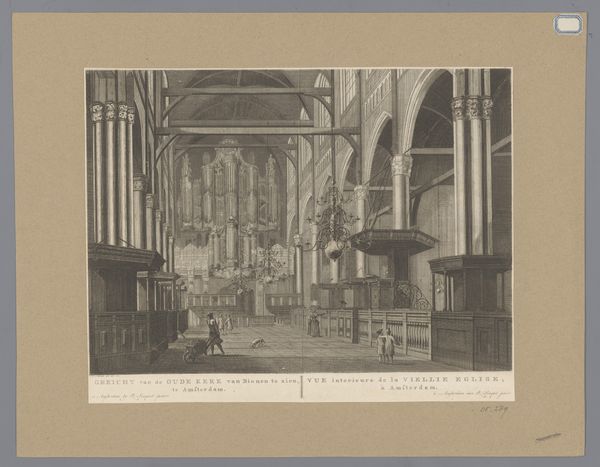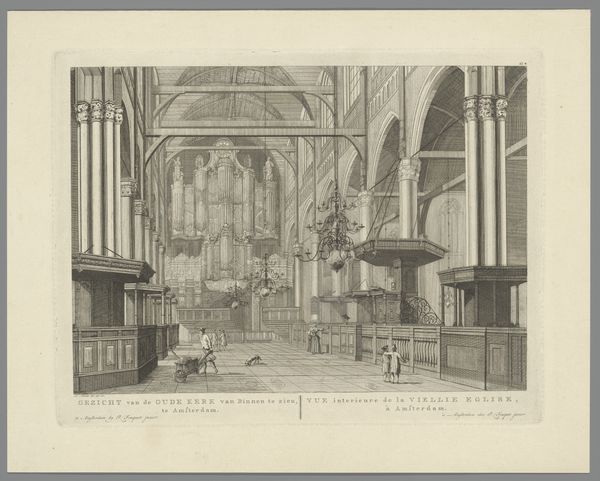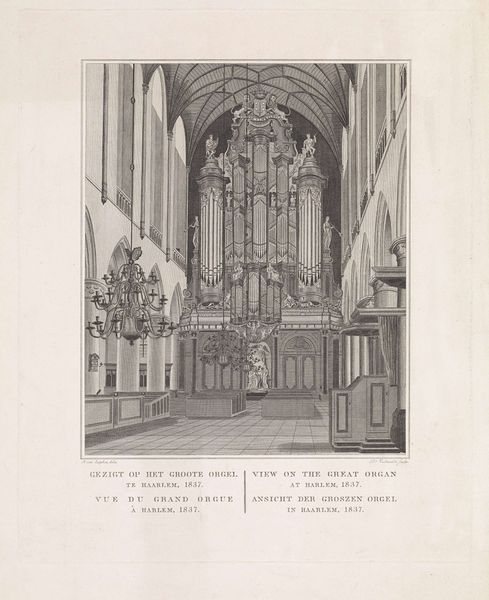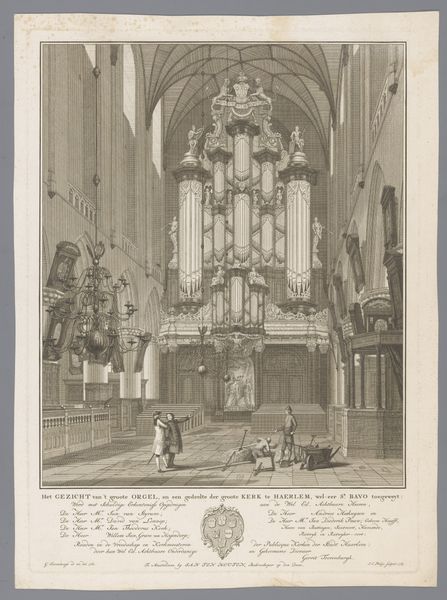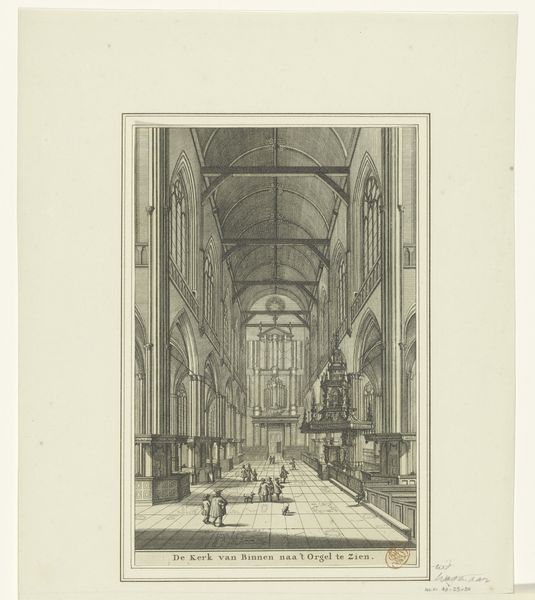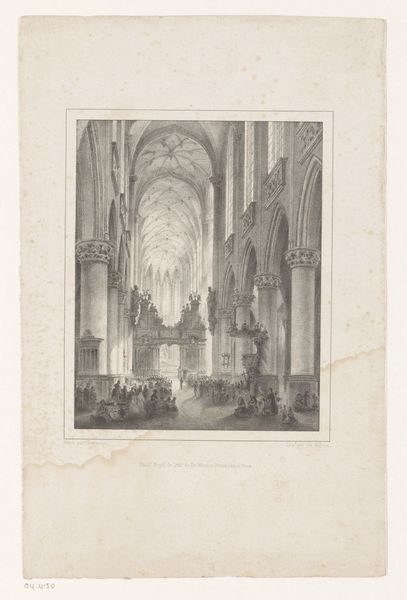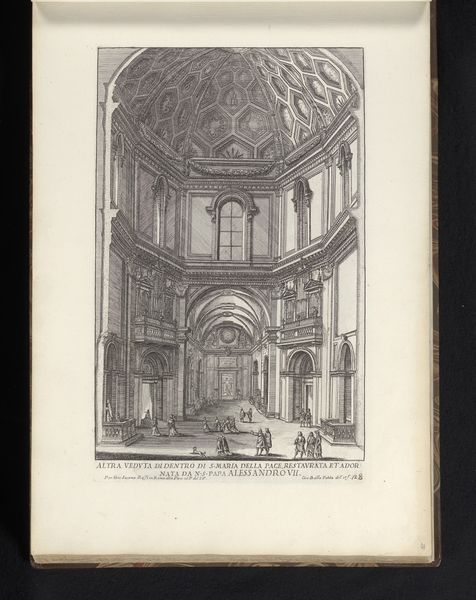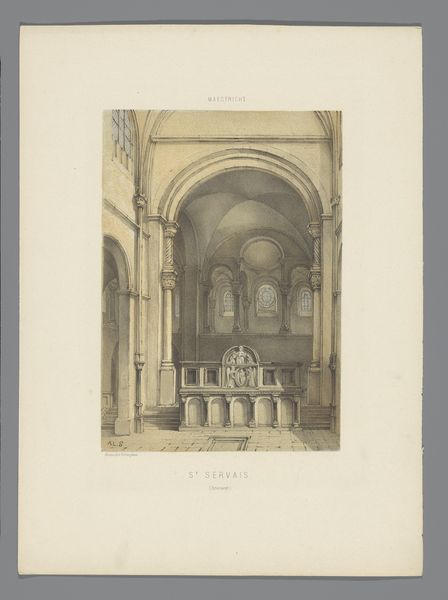
Dimensions: height 353 mm, width 265 mm
Copyright: Rijks Museum: Open Domain
Editor: This print, dating between 1827 and 1875 by Paulus Lauters, is titled "View of the Organ in the Sint-Bavokerk." It’s all lines and geometric forms; the organ looks like it's reaching to the heavens, or perhaps crushing the space around it. What do you see in this piece? Curator: I’m particularly interested in the means of production here. This isn't just a representation of an organ; it’s an *engraving*, a specific labor process. How does the artist's choice of engraving, with its inherent constraints and possibilities, affect our reading of the architectural space? Consider the lines, their density, their direction... Editor: I see how the medium impacts the visual effect, it creates this sense of depth and almost infinite detail. What's the connection with romanticism? Curator: Romanticism isn’t just about idealized landscapes; it's also about the emotional power of sublime architecture and human achievement. But I’d argue the labor involved in creating this detailed image and the accessibility of a print like this moves away from traditional “high art” associated with the style. Consider the print in relation to similar architectural depictions from the era, and we start seeing the commodification of grandeur and piety. How would this image function as an object of consumption for its intended audience? Editor: I hadn't considered the consumer aspect of it. I was focused on the grandeur of the church but viewing this print as an object changes my understanding completely. Thanks. Curator: Indeed! By interrogating the material processes and social context, we reveal its layered meaning beyond just a historical record.
Comments
No comments
Be the first to comment and join the conversation on the ultimate creative platform.
